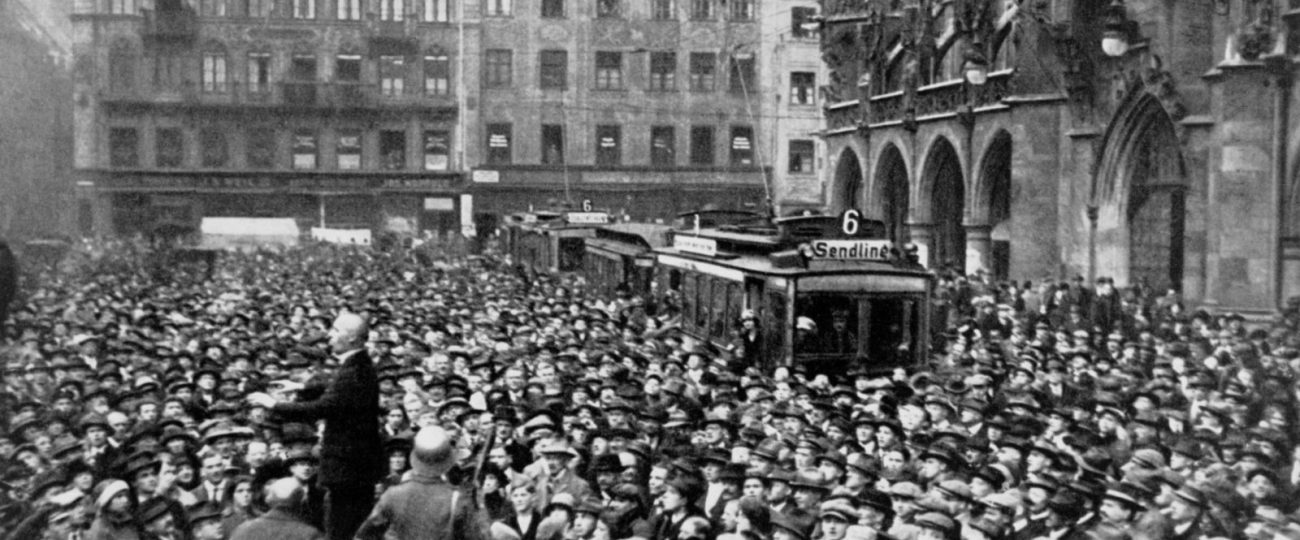What Happened On November 8th?
On November 8, 1939, Johann Georg Elser’s bomb exploded inside Munich’s Bürgerbräukeller beer hall. Adolf Hitler had already delivered his annual speech commemorating the 1923 Beer Hall Putsch and had left the venue early—just 13 minutes before the bomb went off. The explosion killed eight people and injured over 60 others. Elser’s carefully planned attempt to assassinate Hitler missed its mark by mere minutes. Had Hitler stayed for his usual duration, the explosion would have taken his life and potentially altered the course of World War II.
Elser’s plan took months of preparation. Each night for over a month, he visited the beer hall and, posing as a regular customer, worked in secret. He meticulously hollowed out a section of a pillar behind the speaker’s podium, where he hid his homemade bomb. Using simple materials and his skills as a carpenter, Elser built a complex timing mechanism to ensure the explosion would coincide with Hitler’s speech. The timing of the bomb was so precise that investigators later marveled at how closely Elser came to success.
The bomb caused mass destruction. It tore through the ceiling, sending debris crashing down and leaving the hall in ruins. Several high-ranking Nazi officials perished in the blast, though Hitler escaped unharmed. After the explosion, Nazi authorities immediately launched a massive investigation. The night before the bombing, Elser had been arrested while attempting to cross into Switzerland. He was found with wire cutters, bomb schematics, and other tools. Under intense Gestapo interrogation, Elser confessed to planting the bomb but repeatedly insisted he had acted alone, a claim that Nazi officials found difficult to believe.
Elser’s discontent with the Nazi regime had grown steadily since 1933. Born to a working-class family in southern Germany, he worked as a carpenter and machinist. He watched with growing alarm as the Nazis dismantled civil liberties, crushed labor movements, and plunged Germany into increasing militarization. By 1939, Elser felt certain that Hitler had to be stopped before he led the nation into further disaster. Without any outside support, Elser devised his plan, acquiring explosives from a quarry where he had once worked and using his own skills to build the bomb.
The date Elser chose for his assassination attempt was deliberate. Also on the day of November 8th and on the anniversary of the failed Beer Hall Putsch, Hitler tried to overthrow the Weimar government. In 1923, Hitler and his followers had tried to seize power in Munich but were stopped after a firefight with Bavarian police. Hitler’s subsequent arrest and prison sentence initially seemed like a failure, but he used the trial to garner national attention. During his time in prison, he wrote Mein Kampf, which laid out his political ideology and future ambitions. The Nazi Party later mythologized the failed coup as a key event in Hitler’s rise to power, using the annual gatherings in Munich to remind supporters of their leader’s supposed destiny.
Following his arrest, Elser spent the remainder of his life in various prisons and concentration camps. The Gestapo transferred him between facilities, subjecting him to lengthy interrogations. Despite intense torture, Elser maintained that he had acted on his own. Hitler, who initially doubted Elser’s lone-wolf claim, eventually accepted the explanation. Furious over the attempt on his life, Hitler ordered Elser’s execution. On April 9, 1945, just weeks before the fall of the Nazi regime, Elser was executed at Dachau concentration camp.
Elser’s story faded into obscurity for many years. The Nazi regime downplayed his assassination attempt, focusing more on the July 20, 1944 plot involving high-ranking military officers. For decades, Elser received little recognition for his near-successful attempt to kill Hitler. Unlike many other assassination plots, Elser’s plan did not involve an elaborate conspiracy or extensive political networks. He worked entirely alone, driven by his deep conviction that killing Hitler was the only way to save Germany from further ruin.
The Bürgerbräukeller itself held significant value for the Nazi Party. It had been the site of the failed 1923 coup, which the Nazis had turned into a symbol of resilience and victory in the face of adversity. Hitler used the annual gatherings there to remind his followers of his rise to power, framing himself as a leader destined for greatness. By choosing this location and this event, Elser aimed not only to kill Hitler but also to destroy the Nazi Party’s carefully curated image of inevitability. Though the bomb failed to kill its target, it exposed the weaknesses within the Nazi system.
Elser’s motivations came from his working-class roots and his personal experiences under the Nazi regime. He had no formal education beyond his carpentry training, yet his detailed planning and execution of the plot showed an extraordinary level of skill. Elser saw firsthand the hardships faced by laborers under Nazi rule, as wages were cut and working conditions deteriorated. These experiences fueled his desire to take action, believing that one man could make a difference against a regime that seemed unstoppable.





